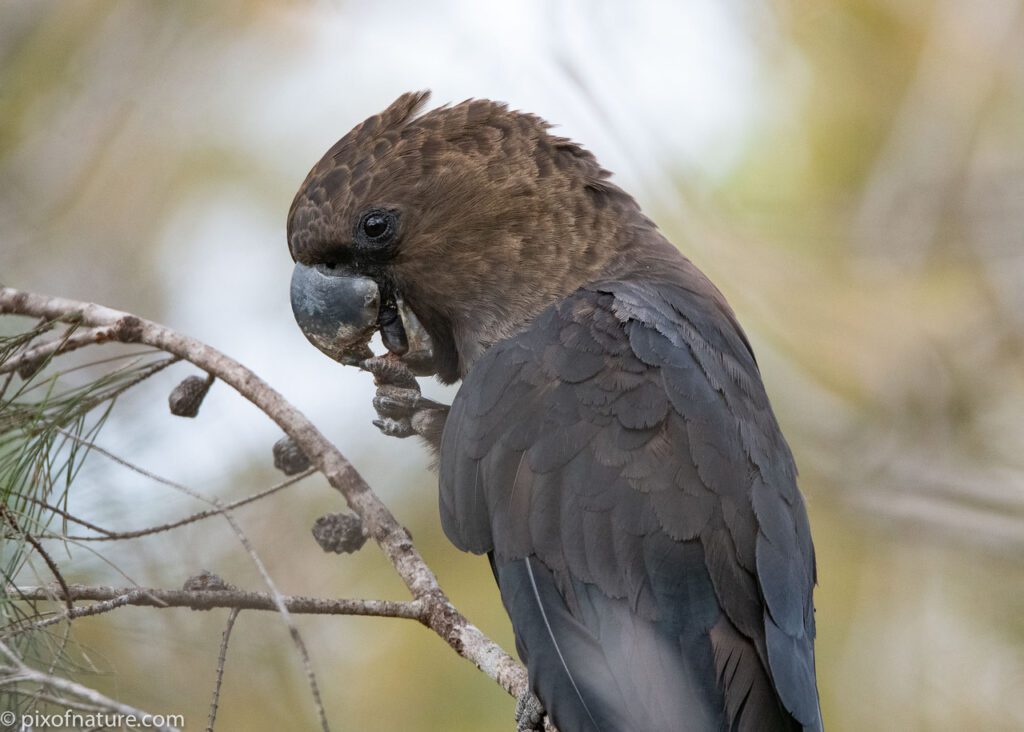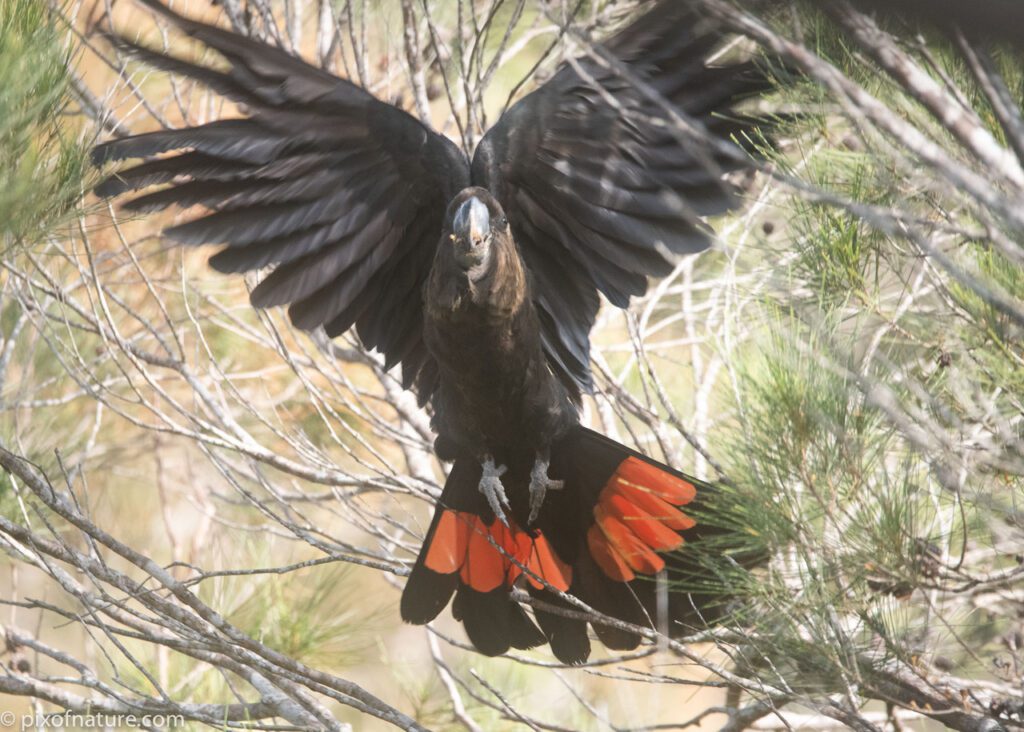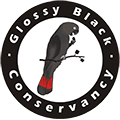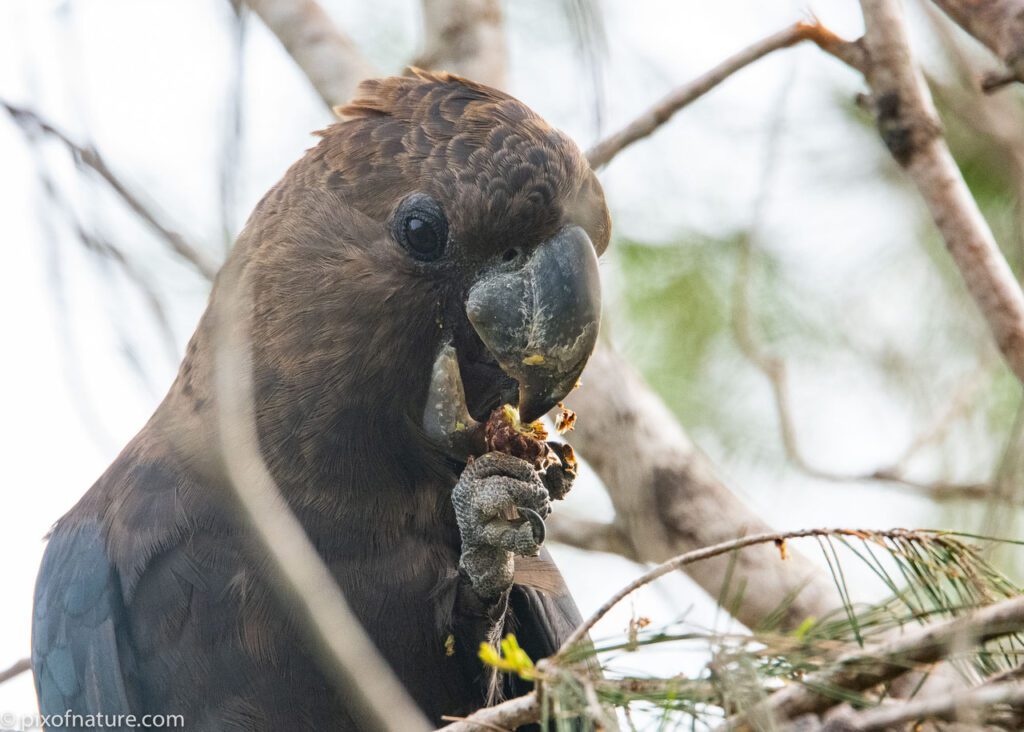The Glossies Northern Rivers project is a new conservation partnership between WWF-Australia, NSW Saving our Species and Wildbnb Wildlife Habitat.
Wildbnb has assembled a team of experts and ecologists leading this local conservation effort and they’re inviting everyday people to join the action as new recruits to the Glossy Squad – the citizen science wing of the project.
The Glossy Squad will provide eyes and ears on the ground, document sightings of Glossy Black-Cockatoos which are listed as Vulnerable in NSW. Glossy Black-Cockatoos are becoming a rare sight across the Northern Rivers region of NSW.
Harry Hackett from Wildbnb said the motivation for starting the Glossy Squad in the Northern Rivers was a belief in people power, “acknowledging the significant role citizen scientists play in conservation efforts.”
And it’s an ambitious project, covering the six local government areas of the Northern Rivers region. So who better to ask for real-time observations than those on the ground?
“We know there’s a lot of passionate citizen scientists out there,” Harry said, “so we’re inviting people to join us in becoming eyes and ears on Glossies where they’re popping up. Glossy Squad intel will go direct to the project team – each piece an important part of this conservation puzzle.”

“Glossy Squad is about building a community of positively passionate people, committed to taking action to conserve these magnificent birds for generations to come.”
And the project couldn’t come at a better time. Glossies across Australia have had plenty to contend with in recent years and Harry says it’s hard to know exactly how they’re faring in this region.
“I think it would be fair to say that we didn’t have a handle on the Northern Rivers glossy population before the fires, certainly south and west of the Tweed. Without a solid scientific baseline, it’s a little difficult to measure,” she said.
“We do know that the 2019-2020 Mt Nardi fire in Nightcap National Park and surrounds saw a LOT of Glossy habitat destroyed.”
“Significant stands of Glossy feed trees, in this area specifically forest she-oak (allocasuarina torulosa) were burnt, as were many old hollow-bearing trees Glossies rely on for nesting hollows.”
“We know the birds have been displaced. It’s unclear exactly where to, and that’s what we’re trying to find out.”
In relation to the catastrophic rain events and flooding of February and March, Harry said the Project’s Expert Panel members discussed the topic and aside from probably needing to seek more shelter from rain wherever possible, the birds will continue doing what they need to do to survive – primarily feed on the cones of she-oak species.
“It’s estimated that glossies can spend up to 80% of their day foraging for food,” Harry said. So rather than impacting the birds’ behaviour, one key effect to follow will be what impact this rainfall has on Glossies’ preferred she-oak food resources in the short and medium-term.”
So how has the response been from Northern Rivers citizen scientists so far in the call out for extra eyes and ears on the ground? In one word, Harry says “awesome.”
“Within a week of launching, we had over 70 Glossy Squad recruits join us on the Facebook group,” she said, adding that the engagement has had impact already.
“A video sent in by a Glossy Squad member led the project team to distinguishing between two separate female glossies observed recently. With no two female Glossy facial markings being the same, the Facial ID catalogue we’re developing is one tool in understanding how far individual birds are ranging if we can collate a large enough image sample.”
“I’d like to take a moment to thank the Conservancy and BirdLife Australia for their collaboration in producing the fantastic Field ID video for the Great Glossy Count this year. It’s just a beautifully comprehensive education resource and of massive benefit in sharing to raise the profile of Glossy Black-Cockatoos,” Harry added.
So citizen science aside, what is it exactly that Glossies Northern Rivers is hoping to achieve for the species?
“In essence, to establish a real-time status update for these threatened birds that will inform regional recovery strategies,” Harry explained.
Data will increase our knowledge of the local population, their distribution and the factors impacting their movement across the Northern Rivers landscape. We need to better understand the extent and crossover of threats impacting Glossy habitat if we are to successfully mitigate them,” she added.

“Identifying areas of critical habitat to be protected will assist land managers – public and private – in making good decisions for Glossies through their land management practices.”
Harry said the group also wants to expand areas of Glossy habitat, creating connected corridors.
“We’re investing in Glossy feeding habitat survey modelling, led by the Conservancy’s Dr Daniella Teixeira. We’re co-investing in the Food Trees for the Future initiative, led by Wilsons Creek Huonbrook Landcare and Brunswick Valley Landcare, to develop Glossy-specific vegetation layer mapping for Northern Rivers NSW and a regional plantings strategy involving local Landcare networks.”
The group is also hoping to harness the latest technology in conducting analysis of the density of significant large hollow-bearing trees within areas of likely Glossy breeding habitat. If relative absence is revealed, artificial hollows will be installed and monitored to measure the efficacy of artificial hollow solutions to supporting Glossies’ breeding opportunities.
But Harry says one of their biggest hopes is to bring the public with them.

“We hope to improve species awareness, highlight the challenges Glossies are facing and engage landholders in the solutions, through invitation to become a part of this local conservation story.”
How can Northern Rivers citizen scientists get involved?
- Visit the Wildbnb website for project details
- Brush up on ID skills and look for Glossies and their feed trees
- Log any data on the new South-easter Glossy Black-Cockatoo modul on Birdata, developed by the Glossy Black Conservancy and BirdLife Australia. It’s the new mainland Australia database for Glossy sightings so hugely important.
- Snap photos of any Glossies that you see – focusing on facial profiles of females.
- Observe seasonal pollination and flowering patterns in the Glossy’s favourite trees found in the region. The many different micro-climates of Northern Rivers may offer different cone production periods within the same species, therefore determining the birds’ movements.
- Protect hollow-bearing trees. The giants of the forest. We need to protect them and plant the giants of the future.
- Contact harry@wildbnb.com.au for more information.
Feature images: Locky Cooper, courtesy Glossy Squad Northern Rivers, 2022

